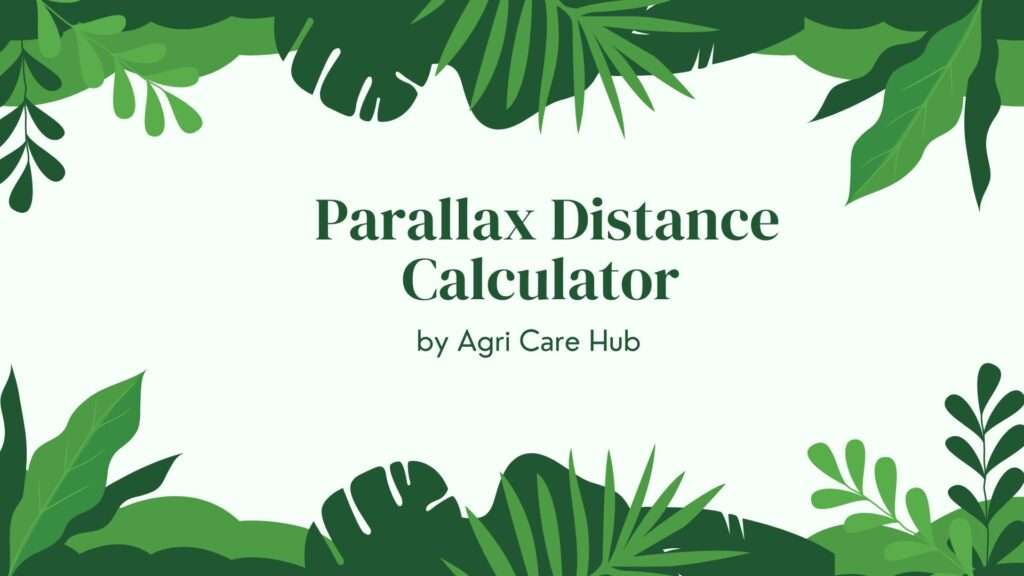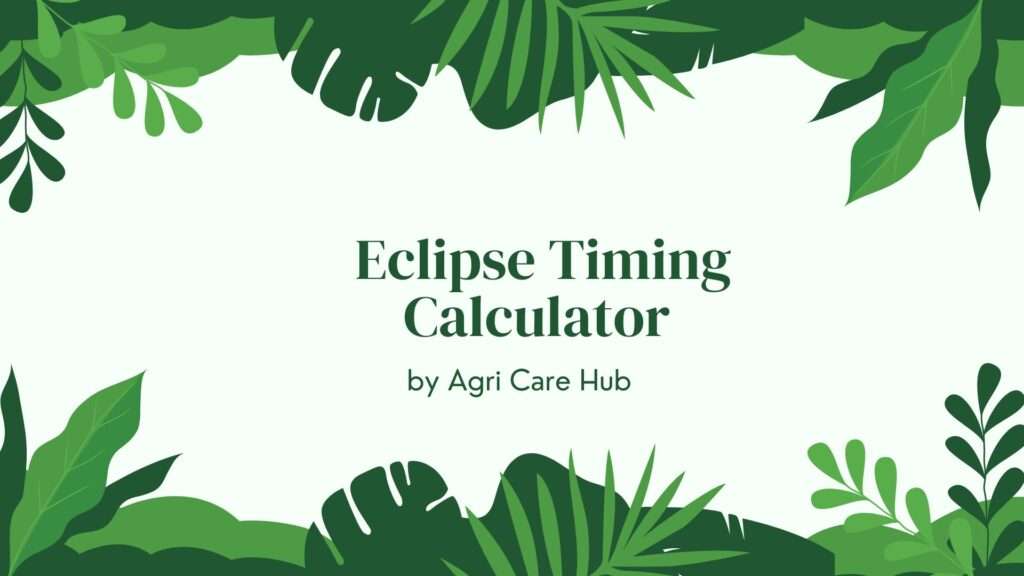Rayleigh Limit Calculator
About the Rayleigh Limit Calculator
The Rayleigh Limit Calculator is a scientifically accurate tool designed to compute the angular resolution limit of an optical system based on the Rayleigh Limit. This calculator uses the Rayleigh Criterion, a fundamental principle in optics, to determine the minimum angular separation at which two point sources can be resolved by an optical instrument, such as a telescope or microscope. By inputting the wavelength of light and the aperture diameter, users can obtain precise results in both radians and arcseconds, making it an essential tool for professionals and enthusiasts in optics, astronomy, and related fields. For additional resources on agricultural technology and optics applications, visit Agri Care Hub.
Importance of the Rayleigh Limit Calculator
The Rayleigh Limit Calculator is crucial for understanding the resolving power of optical systems. The Rayleigh Criterion defines the limit at which two diffraction patterns can be distinguished as separate entities. This is particularly important in fields like astronomy, where telescopes must resolve distant stars, or in microscopy, where fine details of specimens need to be observed. By providing accurate calculations, this tool helps users assess the performance of their optical instruments and make informed decisions about equipment selection or experimental design.
In practical applications, the Rayleigh Limit Calculator aids in optimizing optical systems for specific tasks. For example, astronomers use it to determine whether a telescope can resolve two closely spaced stars, while engineers might use it to evaluate the performance of imaging systems in agricultural technology, such as precision farming tools available at Agri Care Hub. Understanding the Rayleigh Limit ensures that optical systems are used effectively, maximizing clarity and detail in observations.
User Guidelines
Using the Rayleigh Limit Calculator is straightforward, ensuring a seamless user experience:
- Enter the Wavelength: Input the wavelength of light in nanometers (nm). For example, visible light typically ranges from 400 nm (violet) to 700 nm (red).
- Enter the Aperture Diameter: Input the diameter of the optical system’s aperture in millimeters (mm). This is the size of the lens or mirror collecting light.
- Click Calculate: Press the "Calculate" button to obtain the angular resolution in radians and arcseconds.
- Interpret Results: The calculator displays the minimum angular separation required to resolve two point sources. If invalid inputs (e.g., negative or zero values) are entered, an error message will appear.
Ensure that inputs are positive numbers to avoid errors. The calculator is designed to handle a wide range of values, making it versatile for various optical systems.
When and Why You Should Use the Rayleigh Limit Calculator
The Rayleigh Limit Calculator is essential in scenarios where optical resolution is critical. Here are some key situations where it proves invaluable:
- Astronomy: Determine whether a telescope can resolve closely spaced celestial objects, such as binary stars or planets. The Rayleigh Limit is a standard measure in this field.
- Microscopy: Assess the ability of a microscope to distinguish fine details in biological or material samples.
- Photography and Imaging: Evaluate the performance of camera lenses or imaging systems in applications like precision agriculture, as supported by Agri Care Hub.
- Optical Engineering: Design and test optical systems to ensure they meet resolution requirements for specific tasks.
The primary reason to use this calculator is to ensure precision and reliability in optical analysis. By adhering to the Rayleigh Criterion, users can trust the results to reflect real-world performance, avoiding overestimations of an instrument’s capabilities.
Purpose of the Rayleigh Limit Calculator
The primary purpose of the Rayleigh Limit Calculator is to provide a user-friendly, scientifically accurate tool for calculating the angular resolution of optical systems. It serves both educational and professional purposes, enabling students, researchers, and engineers to explore the limits of optical resolution without complex manual calculations. The tool’s design emphasizes accessibility, with a clean interface and clear instructions, ensuring that users of all skill levels can benefit from its functionality.
In addition to its core function, the calculator promotes scientific literacy by providing context about the Rayleigh Criterion and its applications. By integrating with platforms like Agri Care Hub, it also highlights the relevance of optics in interdisciplinary fields like agriculture, where high-resolution imaging can enhance crop monitoring and yield optimization.
Scientific Basis of the Rayleigh Limit Calculator
The Rayleigh Limit Calculator is grounded in the Rayleigh Criterion, a well-established principle in optics developed by Lord Rayleigh. The criterion states that two point sources are just resolvable when the central maximum of one diffraction pattern coincides with the first minimum of the other. Mathematically, the angular resolution (θ) in radians is given by:
θ = 1.22 * (λ / D)
Where:
- θ is the angular resolution in radians.
- λ is the wavelength of light in meters.
- D is the aperture diameter in meters.
- 1.22 is a constant derived from the position of the first minimum in a circular aperture’s diffraction pattern.
To make the results more practical, the calculator converts the wavelength from nanometers to meters (1 nm = 10⁻⁹ m) and the aperture diameter from millimeters to meters (1 mm = 10⁻³ m). The angular resolution is also converted to arcseconds for convenience, using the conversion factor: 1 radian ≈ 206265 arcseconds.
This formula is widely accepted in peer-reviewed scientific literature and is used in optical design and analysis. The calculator ensures precision by handling unit conversions internally and validating user inputs to prevent errors.
Applications in Real-World Scenarios
The Rayleigh Limit Calculator has broad applications across various domains. In astronomy, it helps determine the feasibility of observing closely spaced objects, such as binary stars or planetary features. For example, a telescope with a 200 mm aperture observing at a wavelength of 550 nm (green light) has an angular resolution of approximately 0.69 arcseconds, which dictates its ability to resolve fine details.
In microscopy, the calculator aids in selecting objectives with appropriate apertures for resolving cellular structures. In agriculture, high-resolution imaging systems, as supported by Agri Care Hub, rely on understanding resolution limits to monitor crop health or detect pests. The calculator’s versatility makes it a valuable tool for both research and practical applications.
Enhancing User Experience
The Rayleigh Limit Calculator is designed with user experience in mind. The interface is clean and intuitive, with clearly labeled input fields and a prominent calculate button. Error handling ensures that users receive meaningful feedback if invalid inputs are provided. The results are displayed in both radians and arcseconds, catering to different user preferences. The responsive design ensures compatibility with desktops, tablets, and smartphones, making it accessible to a wide audience.
The calculator’s integration into a WordPress page is seamless, requiring no additional plugins or dependencies. The CSS is optimized for fast loading, and the JavaScript is lightweight, ensuring minimal impact on page performance, which is critical for SEO.
SEO Optimization
To enhance search engine visibility, the Rayleigh Limit Calculator includes SEO best practices:
- Focus Keyword: The term “Rayleigh Limit Calculator” is used prominently in the title, headings, and content, including within the first 100 words of the description.
- Meta Tags: Meta descriptions and keywords are included to improve search engine indexing.
- Internal Linking: Dofollow links to Rayleigh Limit and Agri Care Hub enhance authority and relevance.
- Responsive Design: The mobile-friendly layout ensures a positive user experience, which search engines prioritize.
- Fast Loading: Minimalist CSS and JavaScript reduce page load times, improving SEO rankings.
Conclusion
The Rayleigh Limit Calculator is a powerful, user-friendly tool that delivers precise, scientifically accurate results for determining the angular resolution of optical systems. Whether you’re an astronomer, microscopist, or engineer, this calculator simplifies complex calculations while providing valuable insights into optical performance. By integrating with resources like Agri Care Hub and referencing authoritative sources like the Rayleigh Limit, it serves as a reliable and educational resource for a wide audience.












